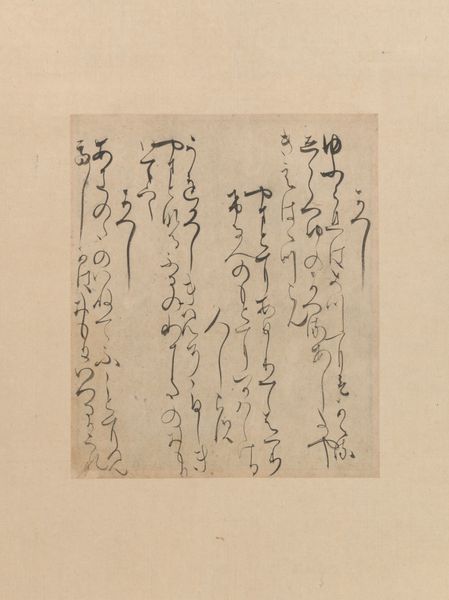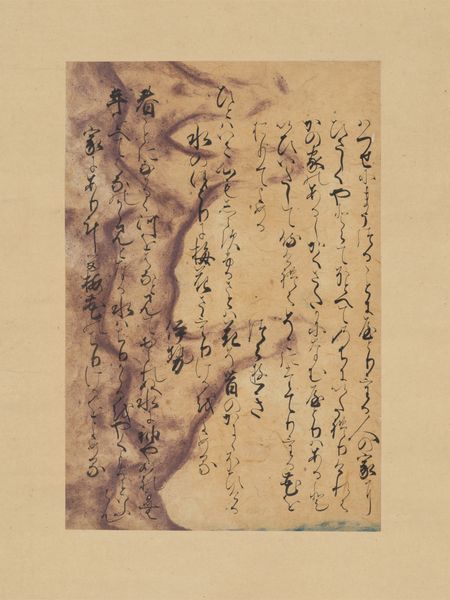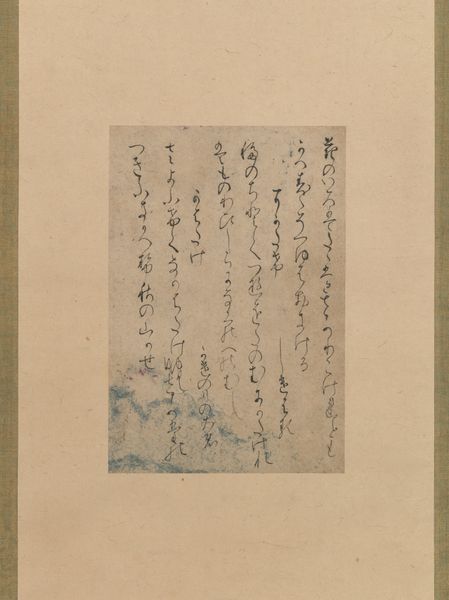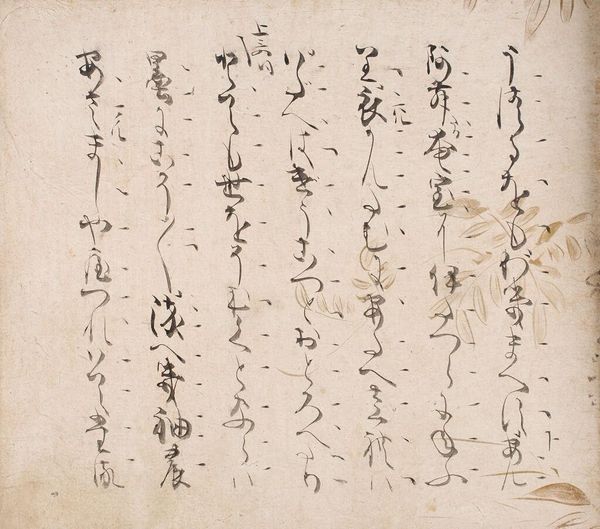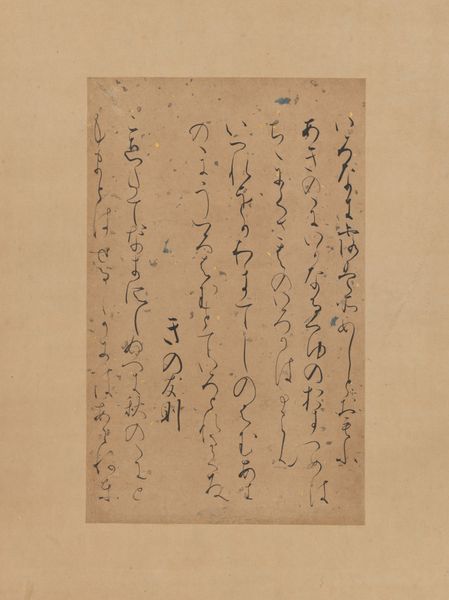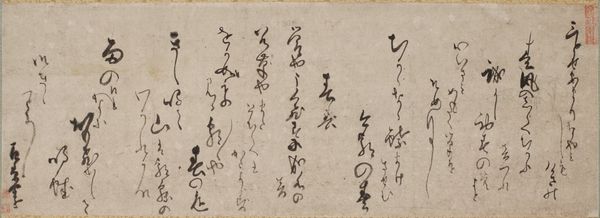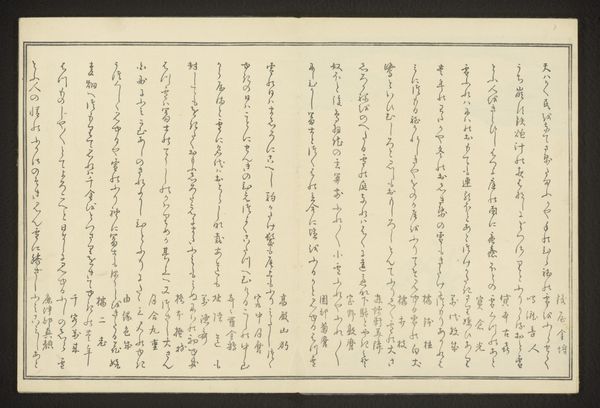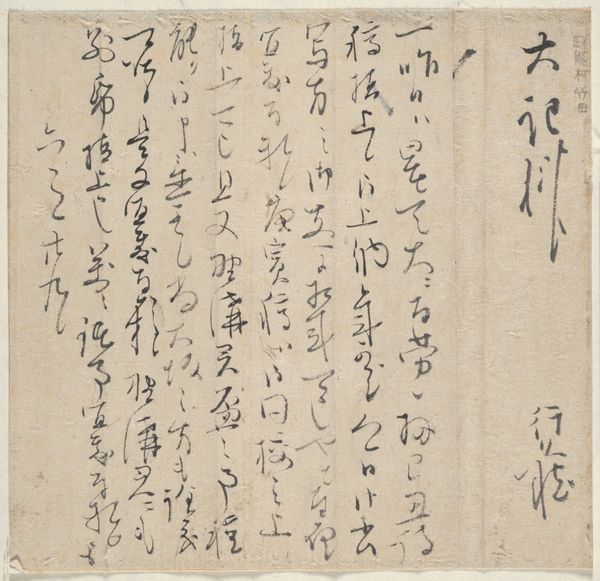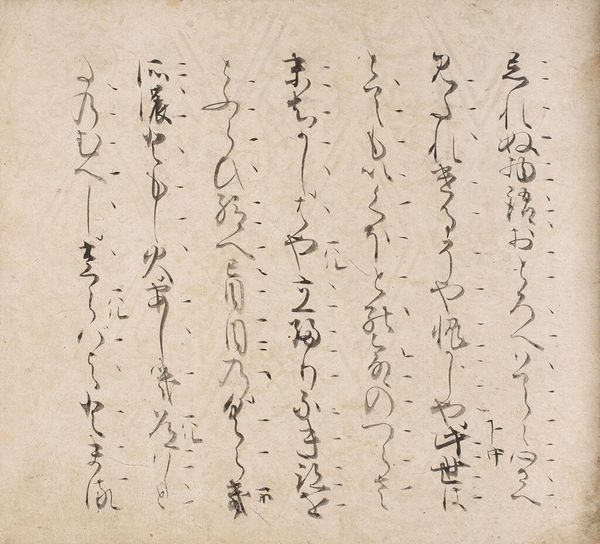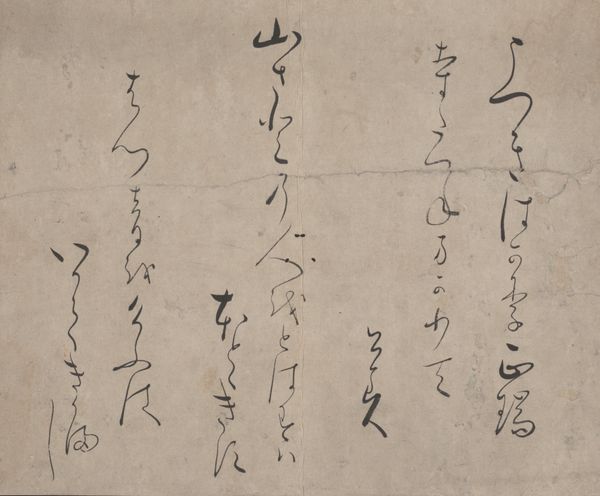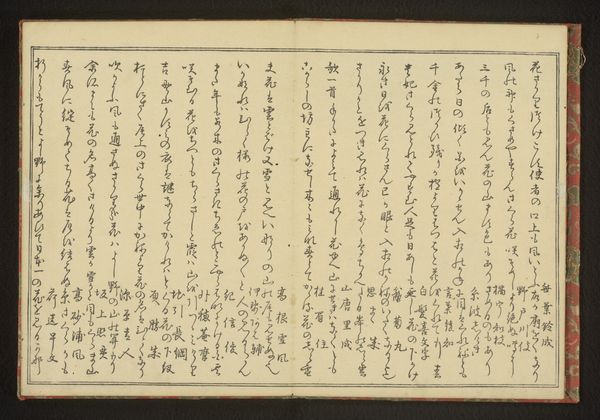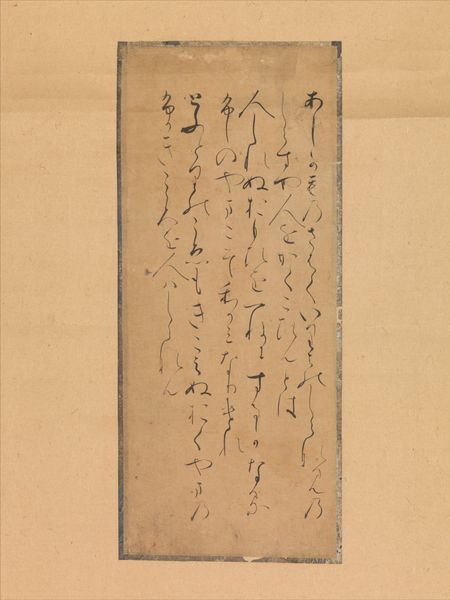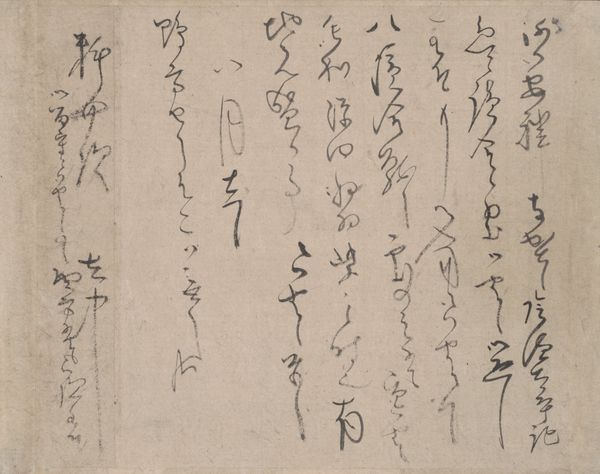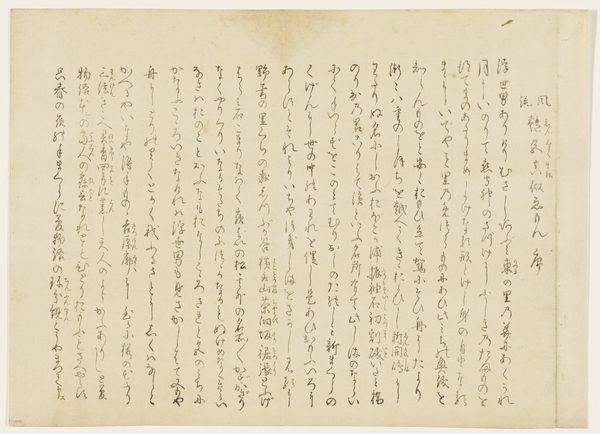
Three poems from the Collection of Poems Ancient and Modern (Kokin wakashū), known as the “Imaki Fragment” (Imaki-gire) 12th century
0:00
0:00
textile, paper, ink
#
byzantine-art
#
medieval
#
asian-art
#
textile
#
paper
#
ink
#
calligraphy
Dimensions: Image: 9 15/16 × 6 1/4 in. (25.3 × 15.9 cm) Overall with mounting: 51 3/16 × 14 3/16 in. (130 × 36 cm) Overall with knobs: 51 3/16 × 16 1/8 in. (130 × 41 cm)
Copyright: Public Domain
Curator: At first glance, it looks like a rainstorm trapped on paper! Dark rivulets cascading down a pale, receptive surface. A melancholic shower, perhaps? Editor: Indeed! What we have here is a fragment from the Kokin Wakashū, an anthology of Japanese waka poetry compiled in the 10th century. This particular piece, dating back to the 12th century and housed at the Metropolitan Museum of Art, is known as the "Imaki Fragment" by Fujiwara no Norinaga, featuring three poems from that esteemed collection rendered in exquisite calligraphy. Curator: Fujiwara no Norinaga... So it’s like gazing at the echo of a voice from nearly a millennium ago? A very artful inscription that looks ancient. Editor: Precisely. And note the interplay between text and textile. It's ink on paper, of course, but the flowing lines and composition mimic the delicate threads of fabric, lending a tactile quality to the visual experience. You feel like you could reach out and touch the poems, caress the history imbued in each stroke. This script also conveys power dynamics: cultural capital for a certain class. The knowledge and skill to not just write poetry, but to scribe it in such an artful way would hold special meaning. Curator: Yes! But the beauty is how delicately balanced this feeling is. The writing seems intentionally messy, and somehow is as serene as the brush of wind over an empty page. Editor: That “intentional messiness,” as you put it, speaks to the very refined understanding of aesthetics and art politics. Each stroke demonstrates precision and discipline but also reflects a unique and carefully honed style which must have had symbolic and literal social currency. It elevates the poems beyond mere verse and reveals the socio-political context in which it was produced and intended to circulate. Curator: Thinking of the politics is sad but it also enhances the effect of this visual dance and emotional connection. This "Imaki Fragment" then has a real pulse! Editor: Absolutely. A piece like this compels us to think about the art in history. Curator: Precisely. It allows us to experience the ephemeral yet also appreciate its persistence and weight. Editor: Indeed. The aesthetics, power dynamics, all so wonderfully tied to individual creative expression. Curator: The best of both worlds meeting together in a dance of ink!
Comments
No comments
Be the first to comment and join the conversation on the ultimate creative platform.
